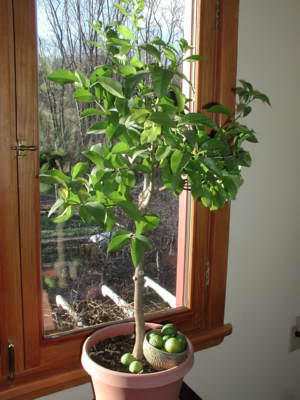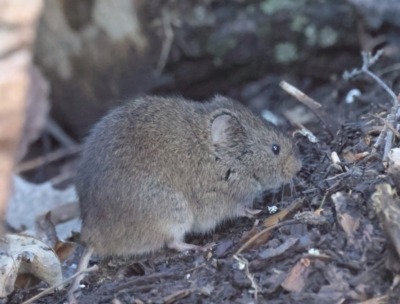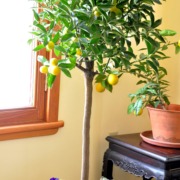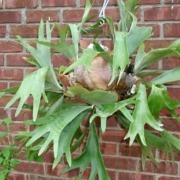THIS CITRUS HAS IT ALL
/9 Comments/in Houseplants/by Lee ReichBotanical Mumbo Jumbo, but it’s Still a Kumquat
Cold and snowy winters agree with me just fine. Still, as a gardener, my mouth waters and my hands itch to be able to pluck ripe citrus from a home-grown tree in winter. It can be done, as attested to by all the potted calamondin orange trees now basking in sunny windows.
As pretty as calamondin trees are, their fruit is barely edible, if that. What I want is a citrus plant that also bears edible fruit. Oranges and grapefruits are possibilities, but let’s admit it: a four-foot high citrus tree festooned with a few large, colorful fruits thoroughly lacks grace. Lemon and lime fruits are better proportioned to an indoor plant, and have the advantage that a single fruit of either goes far in the kitchen.
The citrus that offers the most mileage as a potted plant is kumquat. Read more
GIFTS FOR GARDENERS
/6 Comments/in Gardening/by Lee ReichDuh…A Plant, But What Plant?
December is a low point in the gardening year, but a high point in the year for giving gifts. A felicitous way to raise that gardening low point is with a gardening gift. What might be a good gift for a gardener?
Most obvious would be a plant. After four decades of growing and buying plants, I, for one, still get a thrill when opening a box with a new — for me — plant in it.

Staghorn fern
Still, there are ho-hum plants, plants that have their qualities but just aren’t going to elicit any surges of excitement from me. Read more
MOUSEY THREATS AND SOLUTIONS
/4 Comments/in Pests/by Lee ReichFood and Lodging
Mice have been seeking bed and board, all to the detriment of us gardeners. Already their devilish deeds are evident in the gnawed bark at the base of a poor little apple tree that I planted in spring.
There are a few kinds of mice, and the meadow vole (Microtus pennsylvanicus) — also known as the meadow mouse or field mouse — is most at home in tall grass. There, this rodent finds food and a place to nest and scamper about shielded from the hungry eyes of hawks, owls, weasels, skunks, and other predators.
Unfortunately, from fall to spring, meadow voles like to supplement their usual diet of grasses and herbs with the bark of trees. My trees! Your trees!

Meadow-vole, Cephas, Attribution-Share-Alike-4.0-International.jpg
Inhospitality
The first line of defense against meadow voles, then, is to create an environment inhospitable to them. Read more




